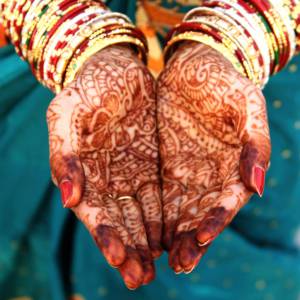Sikhs make up about 1.4 percent of the current Canadian population, according to the most recent National Household Survey. Those numbers translate to a community with over 468,000 members in a country of almost 36 million people. As part of the global diaspora of Sikhs, Canadian followers of this faith enjoy more opportunities while facing unique challenges.
Sikhs Arrive in Canada in the 1800s
The first Sikh settlers, a group of British Indian Army officers, came to Vancouver aboard the Empress of India ocean liner in 1897. These and later immigrants typically found work with the Canadian Pacific Railway, on farms, and in the lumber industry. They faced discrimination in many aspects of their daily lives. Sikh workers, along with other South Asian immigrants, were frequently paid far less than white workers performing the same jobs. Additionally, ignorance about their religion resulted in these individuals being classified as Hindus, and thus they were accused of observing a caste system. The Sikh religion adheres to principles taught by Guru Nanak, who spoke against discrimination based on caste, creed, or gender and believed in equality for all humans. Thus, such a characterization of the Sikh immigrants was inaccurate.
Growing Racism Yields Disastrous Results
As anti-immigrant sentiment grew among white Canadians and successive laws against Asian immigrants were passed, many Sikhs were forced to leave for the United States, Mexico, and South America. One notorious refusal of Indian immigrants occurred in 1914 when a chartered ship carrying hundreds of Sikhs from the Punjab region of India was turned away by the Canadian government. When the vessel returned to India, British soldiers murdered over a dozen of its passengers. The Wall Street Journal disclosed in 2016 that the Canadian government apologised for the affair, known as the “Komagata Maru incident,” in May of last year.
Fighting for Equality
Throughout the first half of the 1900s, Sikhs who stayed in Canada fought for their civil rights. This included their activism with the Khalsa Diwan Society, an organisation formed for the religious, social, political, and cultural development of the community. This era also saw them contributing to Canadian society. One famous example is World War I veteran Buckam Singh, who served with the 20th Canadian Infantry Battalion and was wounded twice in the line of duty. While his story and heroics were almost forgotten for over a century, modern Canadian history now recognises and includes his efforts. Furthermore, all Sikhs had earned the right to vote by 1947.
A New Wave of Immigration Brings Renewed Possibilities
Beginning in the 1950s, educated Sikhs began to emigrate to Canada. These professionals joined the medical, technological, legal, academic, and other advanced fields. Over time, they contributed to making Canada a more diverse nation in several aspects, including entering politics and public service. In a November 2015 Washington Post article, Ishaan Tharoor reported that Prime Minister Justin Trudeau’s cabinet included four Sikh public officials. However, Trudeau’s announcement, along with his later statements about equality and civil rights for people of colour in Canada, have not stood without criticism. Writer Ramesh Thakur opined in a March 2016 piece in the Globe and Mail that the number of Sikhs in Canada’s cabinet is out of proportion with their percentage of Canada’s population, with greater representation than the 468,000 in the country would warrant.
What Does the Future Hold?
Canadian Sikhs now pursue career, educational, and other opportunities that were once denied to many of their predecessors. However, they may face new challenges ahead as anti-immigrant sentiment has started to increase. The New York Times reported on this trend in January 2017, revealing fears that the right-wing extremism prevalent in United States politics may be moving northward across the border. What happens next for the Sikhs in Canada remains to be seen.




